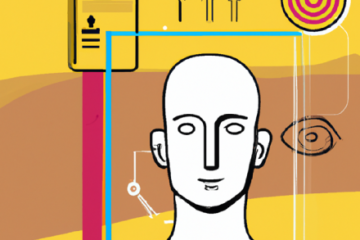8 Steps To Creating a Killer CX Programme
8 Steps To Creating A Killer CX Programme

If you really want to get ahead in the game, nail down a great customer service strategy.
A well-executed customer experience strategy will maximize customer lifetime value, increase customer satisfaction and send your revenue soaring. In fact, the only thing going down will be your churn rate.
We all know the customer’s overall experience with a brand has a significant influence over his/her loyalty, but how do we best go about implementing the infrastructure that will support a focus on optimizing CX?
If you’re thinking about or are in the middle of creating a CX practice within your organization, you might consider the following in your efforts. Here are 8 steps to nail a killer CX programme:
1. Understand your audience & create buyer personas
Understand your customers. Who are they? What are their motivations? The only access to in-depth intelligence will allow you to gain the depth of knowledge required.
There are two ways to do it:
- Profile the types of customers your customer service team deals with every day. A great way to understand the customer’s needs.
- Once you have enough information, create buyer personas. Maximize effectiveness by representing real people. Human beings mean emotion, vital to customer experience.
Gain as much insight into your customer base as possible. Segment if possible, as different segments of your customer base will likely have different expectation and needs of your brand. You’ll likely have a depth of data around transactions but go a little deeper to understand customer motivations as well as relevant lifestyle and behavioural insights. Speak to your customers. Go into the field, leverage brief surveys, or even conduct focus groups to learn as much as you can to optimize the experience you hope to provide.
2. Start from the top
Set CX as a priority at the executive level. Your CEO, president and leadership team must agree that CX becomes a corporate goal and priority before attempting anything else on this list. Failure to do so will prevent your chances of success. You’ll eventually gravitate to include the more customer-facing departments of your company (e.g., marketing, sales, customer service), but don’t forget to include representatives from merchandising, manufacturing and fulfilment in your CX strategy development.

They need to be aware of and understand how their activities and actions can influence and impact your brand’s overall experience.
3. Establish formal ownership and resources
Strategies, processes and goals without owners typically don’t result in completion or success. Creating a CX practice is no different. You must identify someone and/or a team within your organization who will be accountable for the results of your CX initiative. Due to the holistic nature of CX, it might be best to establish ownership outside of existing departments to help ensure an unbiased view of the various areas of the organization that have influence over aspects of brand experience.
Stakeholder management is the process of understanding the attitudes of stakeholders before initiating a potential change with the goal of developing alignment and collaboration between the various groups. Stakeholder planning helps to identify stakeholders’ needs and interests, mechanisms to influence stakeholders, potential risks, key people to keep informed about changes, and negative stakeholders and their adverse effects on the change. Think about cross-departmental leaders to include in your strategy design, the customer experience is created by the entire company so think of all departments that interact with the customer, some of those departments might be marketing, support, product management and billing. Once you have your stakeholders identified, map them into the 4 quadrants to determine the best engagement strategy:
- Supporters (high support, low influence) Involve supporters with the project team to leverage their enthusiasm.
- Champions (high support, high influence) Keep champions close as project partners who can help to influence other stakeholders.
- Gatekeepers: Major Risks (low support, high influence) Investigate concerns from this group and leverage champions to improve their support.
4. Map key customer journeys

A customer journey map is a way of visually illustrating customers’ processes, needs & perceptions throughout their interaction and relationship with your organization. The Customer Journey Map outlines customer needs, pain points, opportunities and different interaction points which accumulate to build a comprehensive “journey” based on their experiences. To create a customer journey map, pick a persona and map out the key steps across the journey.
Thoroughly understand the key experiences customers have with your brand. It can become overwhelming if you attempt to understand and document each experience your customers have. Start with the ones that occur most frequently — e.g., an order placed online or over the phone, the return or exchange process, etc. Involve all team members who play a role in these processes as you seek to identify potential challenges and pain points. Most importantly, look at each journey or experience through the eyes of the customer as well as from an internal perspective. Leverage your internal viewpoint to identify potential drivers of experiential friction.
5. Capture customer feedback
Listen to your customers and proactively respond to and address issues and challenges. Implement easy mechanisms to capture customer feedback across all brand touchpoints. Don’t ask the customer to answer too many questions. Keep it simple. Net Promoter Score (NPS) is a somewhat universal approach to quick and actionable customer feedback and is fairly easy to deploy.

While you’re capturing and monitoring feedback over time, make sure you’ve identified and established the appropriate resources and processes to provide adequate service recovery for customers who experience brand friction. Make sure you monitor the customer satisfaction levels of your service recovery efforts as well. Lastly, if you have a call centre, record select calls that represent “poor” brand experiences and play them back to your organization. It’s a great way to expose service pain points and will motivate your company to better understand, address and develop resolutions.
Tracing back to the Bain & Company’s research, 80% of companies believe they are providing great customer service, but only 8% of customers agree with them. If you think you’re an 8/10 for customer service, you’re not even half right!
How can you know customers’ needs without asking? How can you assess brand value without asking? That’s why it’s essential to create feedback loops.
Here’s how:
- Use post-interaction and real-time feedback surveys. Follow up with customers over the phone for more details.
- Pay attention to what is being said about you on social media. This is where customers are usually the most honest.
- If you keep your ear to the ground, you’ll hear customers telling you exactly what they want.
6. Build systems for quick & effective resolutions
Having digested the customer feedback, it’s time to respond. Every stage in the customer lifecycle should have an unobtrusive support system in place. Place control in the customers’ hands. Don’t force your support on them, but show them it is there and how to access it.
Technology can help, but may not always be available. Advanced CEM systems provide significant support for your CX efforts. At a minimum, monitor changes in your customer base over time — e.g., average purchase and time since last purchase. Augment this with some measure of satisfaction (NPS score) so you’re able to correlate changes in revenue to changes in satisfaction.
Now you understand what touchpoints and interactions you want to measure and improve, creating a system to do this is the next step. This is where most companies turn to CEM systems. Customer experience platforms are tools for companies to measure, report, analyze and take action on the human feedback from customers.
7. Understand your customer experience metrics

Make data-driven decisions regarding your CX efforts. Establish appropriate customer-centric metrics to assess the level of satisfaction customers have regarding your brand experience. Utilize retention-oriented analytics like churn and lifetime value. Leverage NPS score, call-centre service levels, and insights from surveys.
Also, consider metrics affiliated with fulfillment — e.g., processing time, speed of delivery, etc. Every business is different. Ask the customer what’s important to him/her when it comes to the “best” service and employ metrics that will allow you to effectively assess your success rate.
Failing to measure your customer experience, means missing out on valuable information. Remember, if it can’t be measured, it can’t be improved. There’s plenty of data out there. Average response and resolution time for example.
It’s not all about the front line though. Just tracking and measuring customer-facing team performance won’t provide the whole picture. Don’t forget that the teams behind the scenes can have a big impact on customer experience.
Focus on quantitative insights:
- NPS – Net Promoter Score shows the percentage of your customers who would/wouldn’t recommend your company to their friends, family, or colleagues.
- CSAT – Customer Satisfaction Score is a transactional metric showing how satisfied customers are with a recent interaction. This is often purchased or a customer service call. It’s flexible and highly customizable.
- CES – Customer Effort Score shows the effort expended by customers in accomplishing a task. Could be getting a support request handled or finding the product they were looking for.
8. Optimize your customer experience strategy
The experience design process is a method to further develop initiatives subsequent to your customer journey mapping and opportunities brainstorming session. This agile process ensures unproven ideas are stopped and retired, and viable ideas are further developed into a business case to incite action. The methodology is: we believe (describe the new experience), will solve (customer’s needs and organizations issue/opportunity), enabled by (full solution), resulting in (new attitude/behaviour/result). Run each opportunity through the design tool to further develop each opportunity and then rank each opportunity in terms of its customer and business value.
A customer experience strategy is an ongoing process. Adopt a continuous improvement approach. Measure, optimize, repeat.
Here are some tips on how:
- Don’t forget the little details.
- Leverage customers to gather information on brand experience, design, product usage, etc.
- Know your target audience.
- Train staff about your products, how to deal with customers queries.
- Foster a customer-centric mindset.
- Be prepared to continuously improve.
Establishing a CX practice in your organization will require significant time, effort and diligence. Make sure your company is behind you on this effort. Educate the C-suite. Illustrate the impact of a satisfying and relevant experience on customer loyalty and revenue growth. Leadership will have a hard time refuting the data you provide that correlates improving service and customer satisfaction to revenue growth.
Above all, be patient and methodical. The final result and impact on your customer, his/her loyalty, and the overall revenue will be well worth it.
If you’re about to start or are in the middle of building your CX practice, connect with us and we’d love to hold your hand and walk you through the path of excellence.
To help you assess the readiness of your CX initiatives, experts at LitmusWorld and The Positivity Company have carefully designed a CX Maturity Assessment. This will help you understand where you currently are and where you want to be through our CX Maturity Roadmap guide.
Take the CX Maturity Assessment

